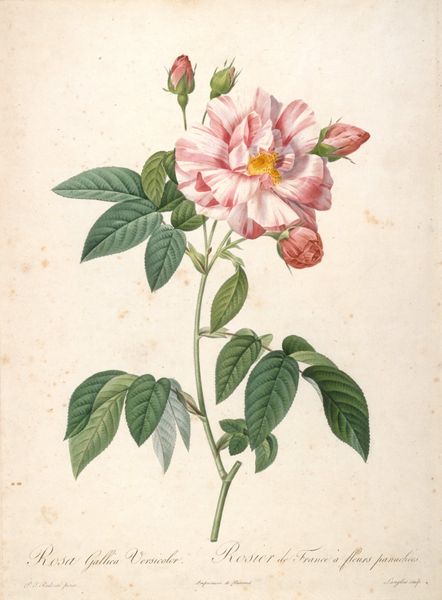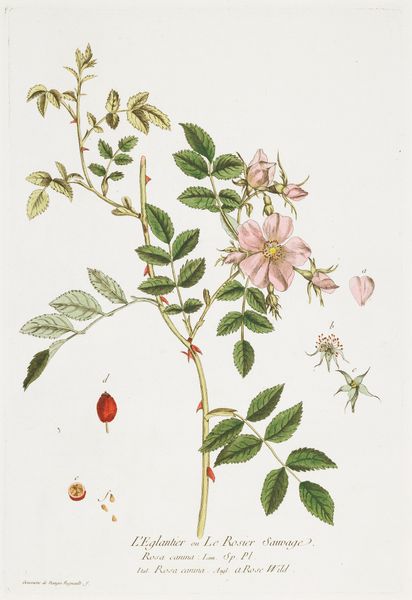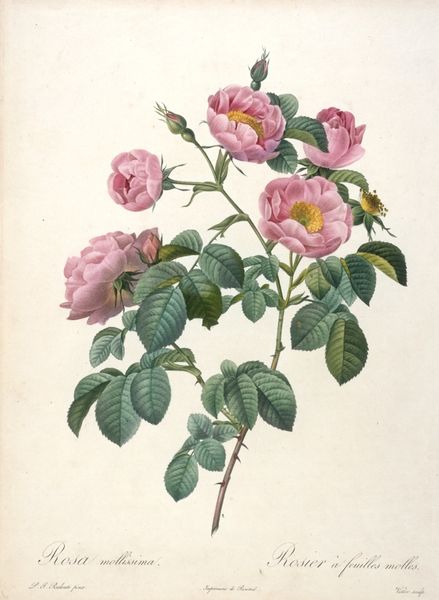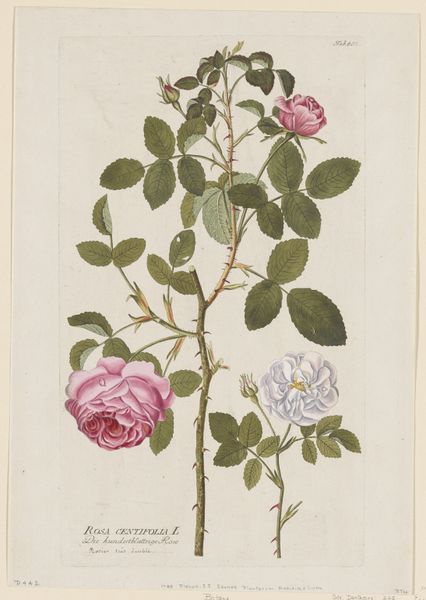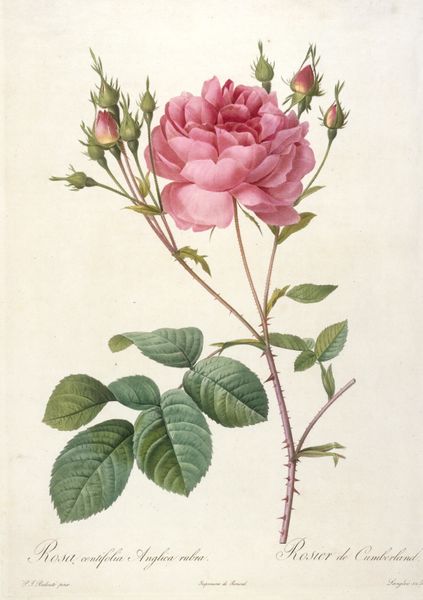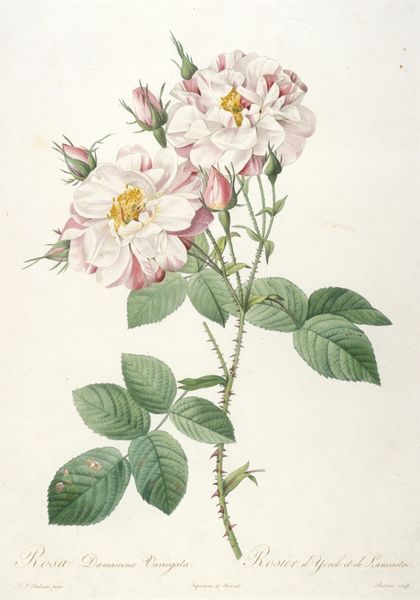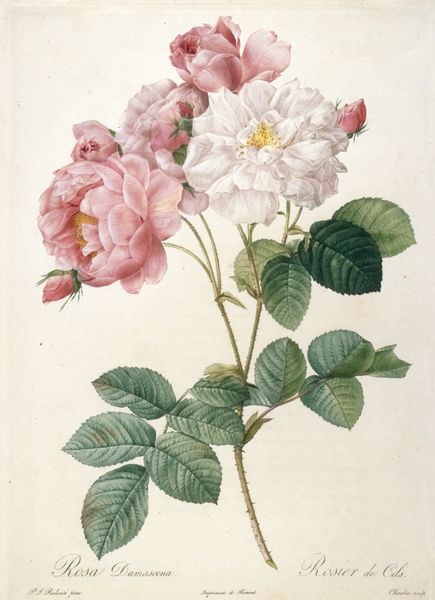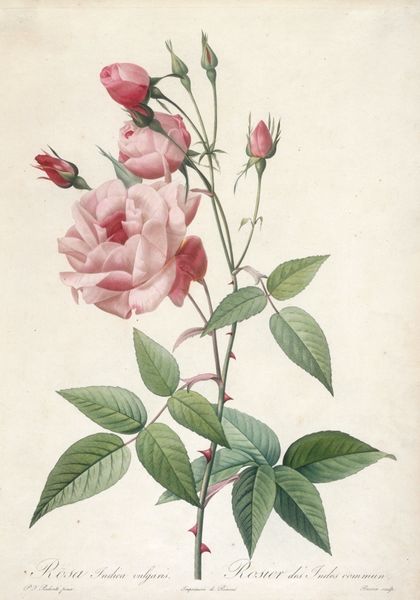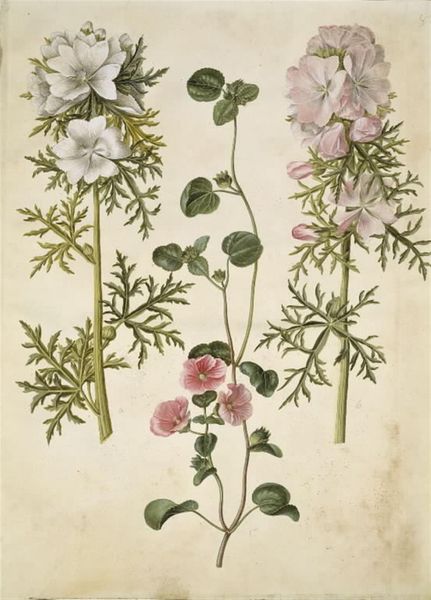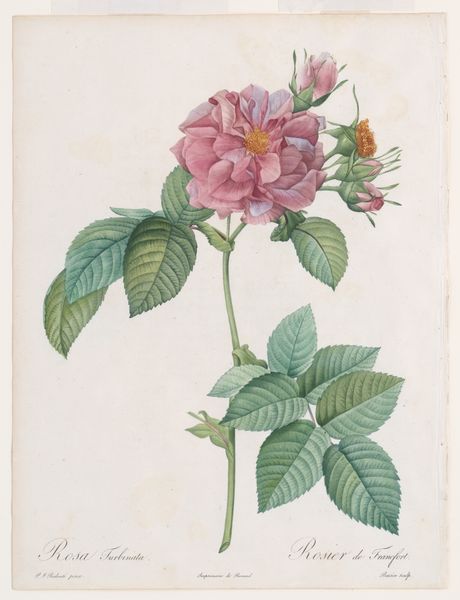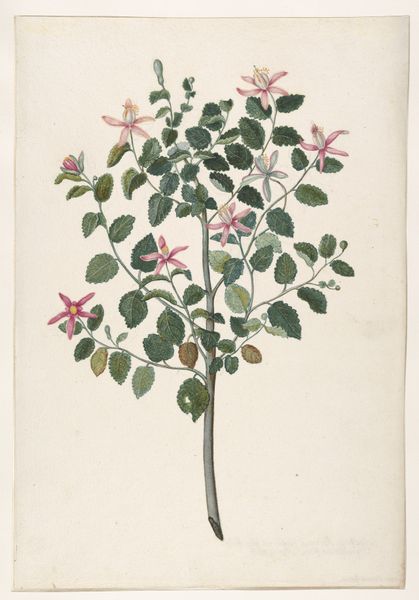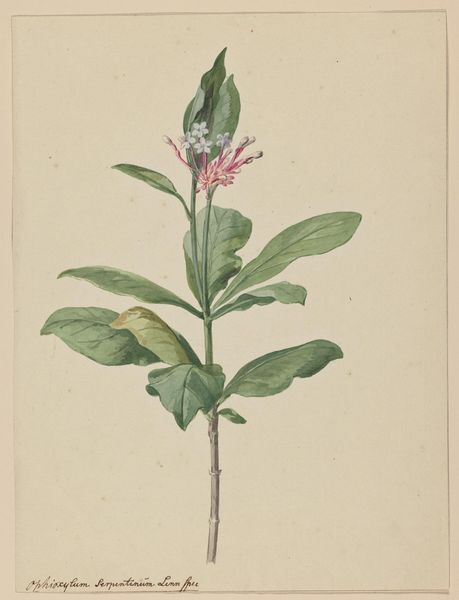
Dimensions: height 383 mm, width 257 mm
Copyright: Rijks Museum: Open Domain
This watercolor of a Japanese quince was created by C.J. Kruimel on paper, using meticulous brushwork. The even, translucent layers of paint give the leaves and blossoms a lifelike delicacy. But why choose to render this particular subject with such care? Botanical illustration has a long history, deeply entwined with both scientific exploration and aesthetic appreciation. The detailed rendering of plants was essential for documenting new species, especially during the age of exploration and colonialism. These images were also luxury objects, emblems of knowledge and taste for a wealthy, educated audience. The beauty and precision of botanical art reflect not just the artist's skill, but also the social and economic context in which such work was valued. The act of carefully depicting nature could be both a scientific pursuit and a celebration of the natural world's beauty. It urges us to think about how art, craft, and science intersect, blurring the lines between observation, documentation, and artistic expression.
Comments
No comments
Be the first to comment and join the conversation on the ultimate creative platform.
